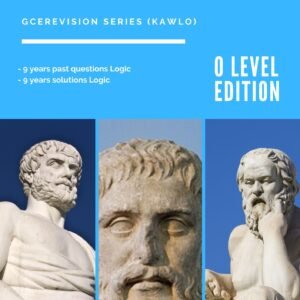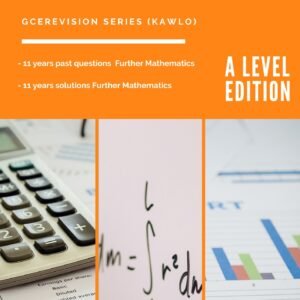Cameroon GCE advanced level June 2025 further mathematics 3
Cameroon GCE advanced level June 2025 further mathematics 3
Here are the extracted questions from the provided images:
Page 1
- The force F=(4i−7j−4k)N acts at the point with position vector (3i+4j−6k)m.
i) Write down a vector equation of the line of action of F.
ii) Find the work done when a particle moves under the influence of F from the point A(2,3,4) to the point B(6,−1,10).
iii) Find the vector moment of F about the origin.
iv) Find the vector moment of F about the point with position vector (i+2j−3k)m.
v) Find the distance from the origin to the line of action of F.
- The function y=f(x) satisfies the differential equation
dxdy=f(x,y)where f(x,y)=2−x2y
and the initial condition y(1)=1.
a) Use the formula
yr+1≈yr+hf(xr,yr)with h=0.05
to obtain an approximation for y(1.1), giving your answer correct to three decimal places.
c) Hence, use Simpson’s rule to estimate the value of ∫11.1y(x)dx.
- A particle, P, executes simple harmonic motion along a straight line with centre, O. The period of motion is 2π seconds and the amplitude is 5 metres. Initially, P passes through the point, A, while moving with velocity −3m s−1. Find,
(i) the distance OA,
(ii) the time, in seconds, to four significant figures, taken by P to move directly from A to O.
- A car of mass 800kg moves along a straight level road against a resistance of magnitude (4+kv2)N where vm s−1 is the speed and k is a positive constant. The constant tractive force exerted by the engine is 404N. The maximum speed of the car is U.
i) Show that
vdxdv=2U2(U2−v2)
(ii) Find the distance covered as the speed increases from 0 to 2U.
- A sphere A of mass 2m moving with velocity 3ui collides obliquely with another sphere, B, of same radius but of mass m moving with velocity u(−2i+4j). Just before the spheres collide, their line of centres is parallel to the unit vector i. The coefficient of restitution between the two spheres is 51.
(i) Find the velocities of A and B immediately after impact.
(ii) Find the total kinetic energy of the spheres before impact.
Page 2
- Show that
(iii) the total kinetic energy of the spheres after impact is 11mu2,
(iv) the kinetic energy loss as a result of the impact is 8mu2.
- A particle, P, moves on the curve with polar equation
r=1+cosθ1.
Given that at any time t during the motion, r2dtdθ=2.
(i) write an expression for rdtdθ in terms of θ.
(ii) Show that dtdr=2sinθ.
When θ=2π, find
(iii) the speed of P,
(iv) the radial component of the acceleration of P.
- A uniform circular disc of mass, m, and radius, a, performs small oscillations about a smooth horizontal axis in the plane of the disc, which is of distance x from the diameter of the disc, where 0<x<a.
(i) Show that the least period of oscillation is 2πga.
(ii) Find the length of the equivalent simple pendulum in this case.
(You may assume that the moment of inertia of the disc about its diameter is 41ma2)
- a) A discrete random variable Y follows a binomial distribution with mean 1 and variance 0.8. Find, correct to 4 decimal places,
(i) P(Y=2)
(ii) P(Y<2)
(iii) P(Y≥1)
b) The marks X in an examination are normally distributed with mean μ and standard deviation 8. Find the value of μ to the nearest whole number, given that the probability that a candidate scores a mark more than 30 is 0.1038.















